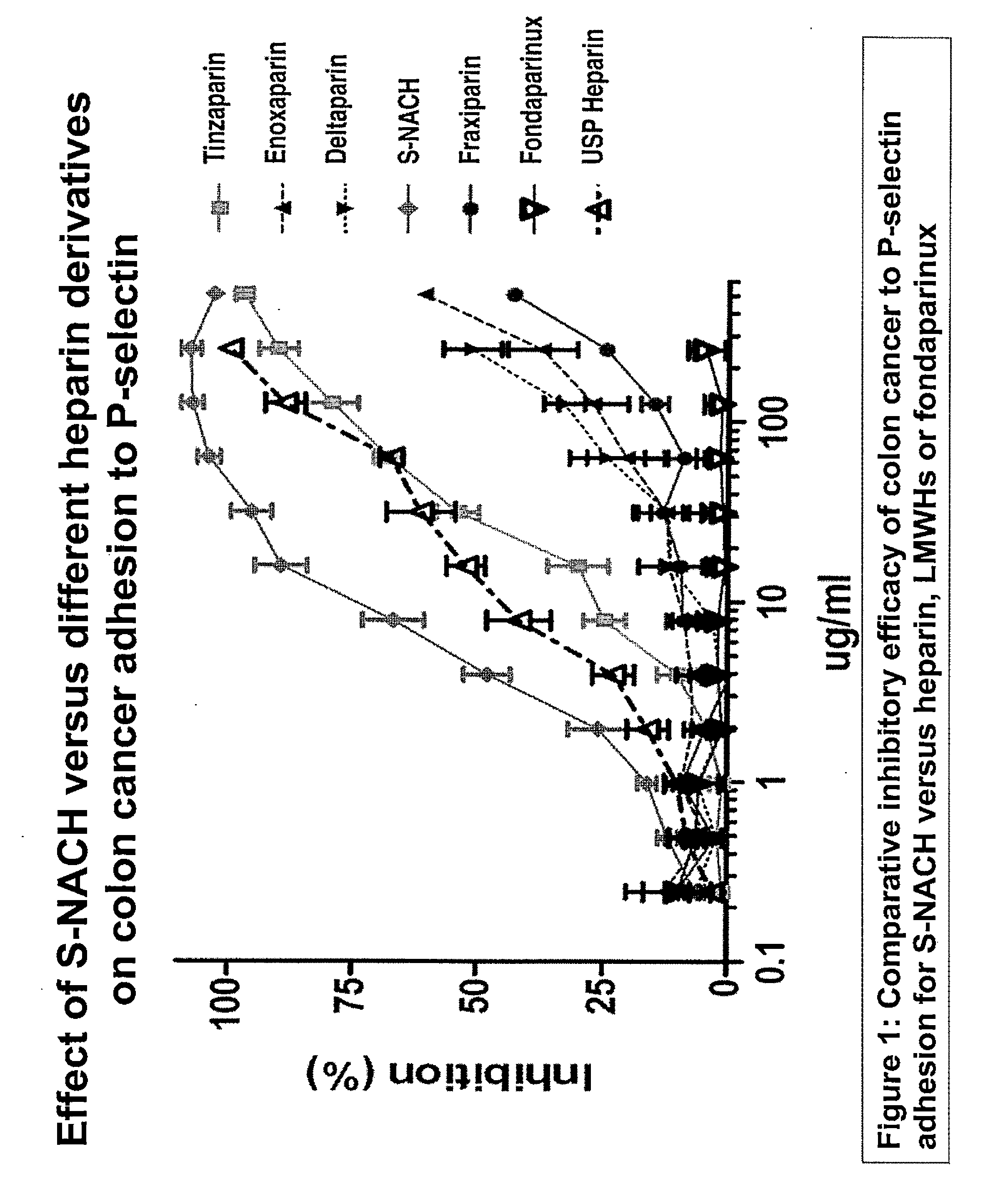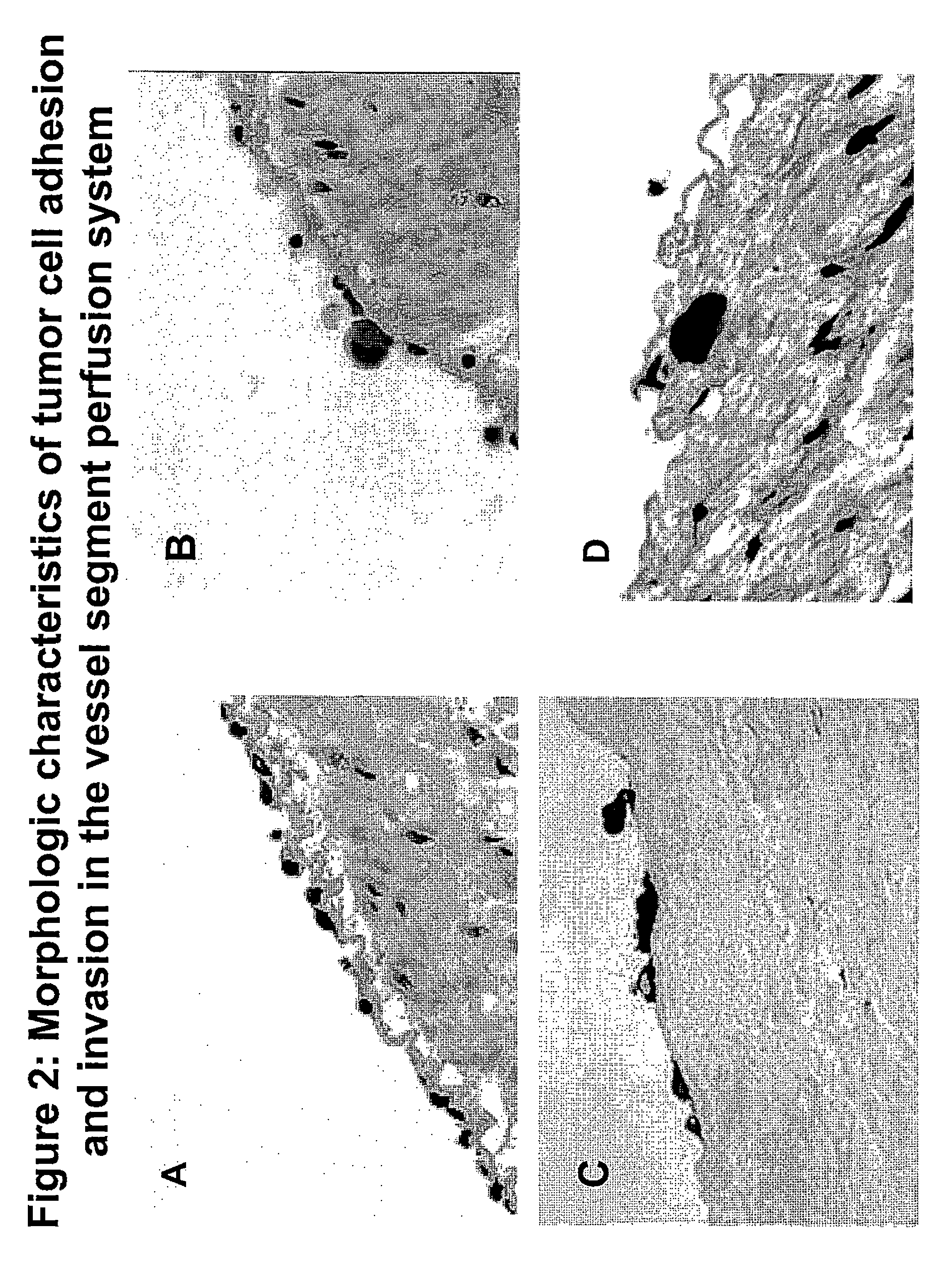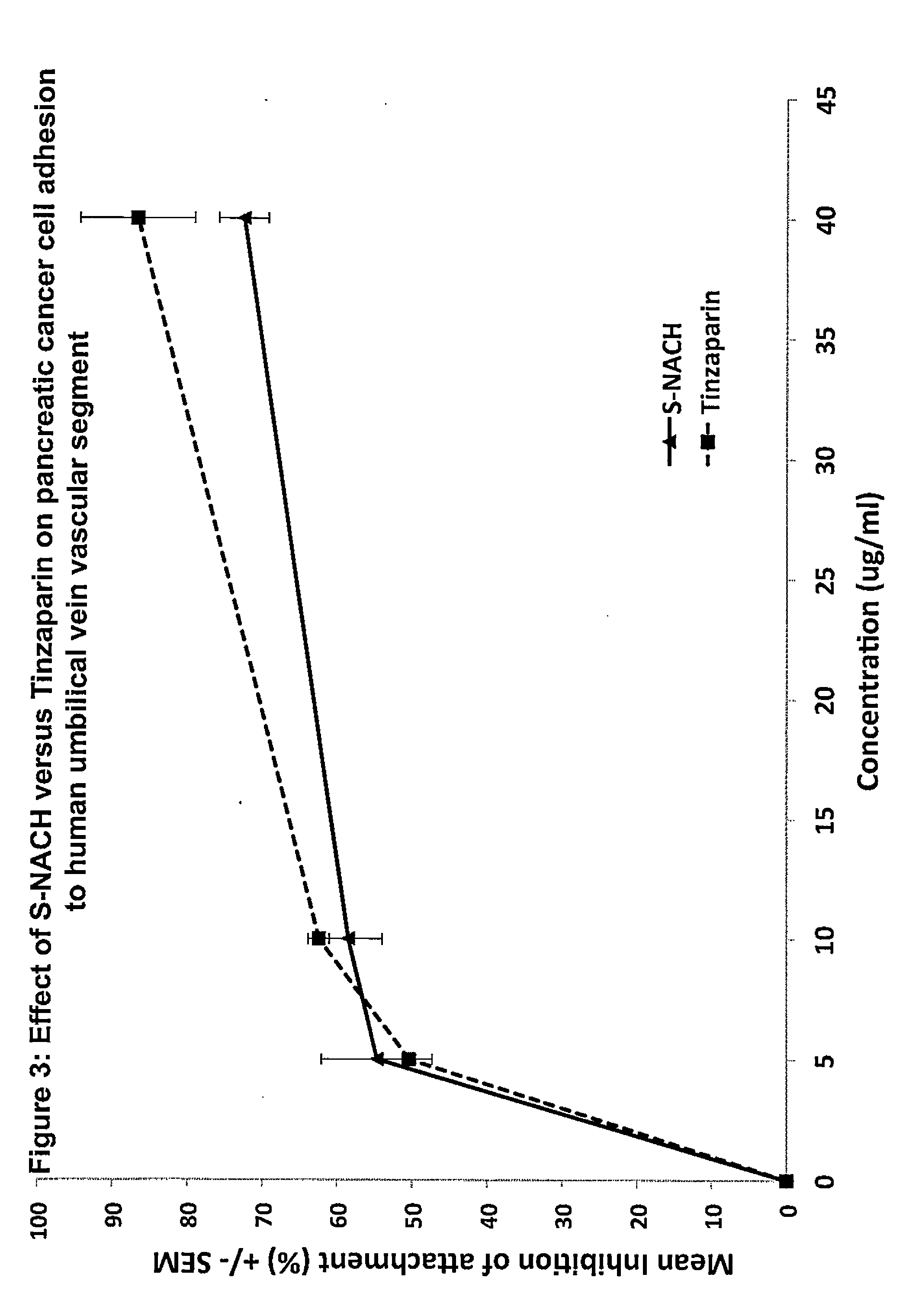Composition and method for sulfated non-anticoagulant low molecular weight heparins in cancer and tumor metastasis
a low molecular weight, heparin technology, applied in the direction of synthetic polymeric active ingredients, capsule delivery, microcapsules, etc., can solve the problems of poor oral absorption, limited use of heparin as an anti-metastatic agent, and poor anti-coagulation
- Summary
- Abstract
- Description
- Claims
- Application Information
AI Technical Summary
Benefits of technology
Problems solved by technology
Method used
Image
Examples
example 1
Preparation of Sulfated Non-Anticoagulant Heparin (S-NACH)
[0075]Unfractionated porcine Heparin or bioengineered heparin was fragmented by periodate oxidation based on a procedure from Islam et al. See Islam T, Butler M, Sikkander S A, Toida T, Linhardt R J, Further evidence that periodate cleavage of heparin occurs primarily through the anti-thrombin binding site, Carbohydr Res. 2002, 337(21-23):2239-43.
[0076]Heparin, sodium salt (20 g, 1.43 mmol) was dissolved in 175 mL of distilled water. The pH was adjusted to 5.0 using 1 N HCl, NaIO4 (15 g, 0.07 mol), dissolved in 500 mL water, which was added in a single portion with stirring. The pH was readjusted to 5.0 using 1 N HCl and left for 24 hours at 4° C. in the dark. The solution was dialyzed against 4 volumes of water (with one change of water) for 15 hours at 4° C. To the approximately 1.5 L of solution obtained after dialysis, 32 mL of 10 N NaOH was added. The solution was stirred at room temperature for 3 hours. To prevent the d...
example 2
Cancer Cells
[0077]Pancreatic cancer cell line MPanc96 and its luciferase transfected Mpanc96-luc cells were grown in DMEM supplemented with 5% fetal bovine serum, 1% penicillin, and 1% streptomycin. Cells were cultured at 37° C. to sub-confluence and treated with 0.25% (w / v) trypsin / EDTA to affect cell release from culture flask. After washing cells with culture medium, cells were suspended in DMEM (free of phenol red and fetal bovine serum) and counted. These cells were also genetically modified to contain luciferase, which emits signals that can be detected by in vivo imaging system (IVIS).
[0078]Other human pancreatic cancer cell lines MIA-PaCa-2 and BxPC-3 were obtained from the American Type Culture Collection (Rockville, Md.). Two different pancreatic cancer cell lines were chosen for study because each cell line exhibits different characteristics in vivo with respect to rate of growth and metastasis, with the former showing more rapid and extensive dissemination. Cells were ma...
example 3
Platelet-Cancer Cell Adhesion Assay
[0079]A cancer cells-platelets adhesion assay was used to test the efficacy of the test compounds in inhibiting the adhesion between P-selectin and tumor cells. This was done by growing the Mpanc96 cancer cells in 96-well plate to 100% confluence. Ten ml of human blood was drawn by vacutainer tube containing citrate acid and dextrose and stored at 4° C. overnight. After 24 hours, the supernatant of the blood was collected (platelet-rich plasma). The platelet rich plasma was centrifuged for 10 minutes at 1000×g and resuspended in 10 ml PBS. The platelets were labeled with Calcien AM fluorescence dye and incubated for 30 minutes at 37° C. The platelets were then washed five times with PBS by centrifuging at 2,000×g for 10 minutes. The test compounds were mixed with the platelets 30 minutes prior to adding them to the cancer cells to allow the compounds to bind to the P-selectin of the platelets. The concentrations ranged from 5 ug / ml to 20 ug / ml for ...
PUM
| Property | Measurement | Unit |
|---|---|---|
| Chemotherapeutic properties | aaaaa | aaaaa |
Abstract
Description
Claims
Application Information
 Login to View More
Login to View More - R&D
- Intellectual Property
- Life Sciences
- Materials
- Tech Scout
- Unparalleled Data Quality
- Higher Quality Content
- 60% Fewer Hallucinations
Browse by: Latest US Patents, China's latest patents, Technical Efficacy Thesaurus, Application Domain, Technology Topic, Popular Technical Reports.
© 2025 PatSnap. All rights reserved.Legal|Privacy policy|Modern Slavery Act Transparency Statement|Sitemap|About US| Contact US: help@patsnap.com



